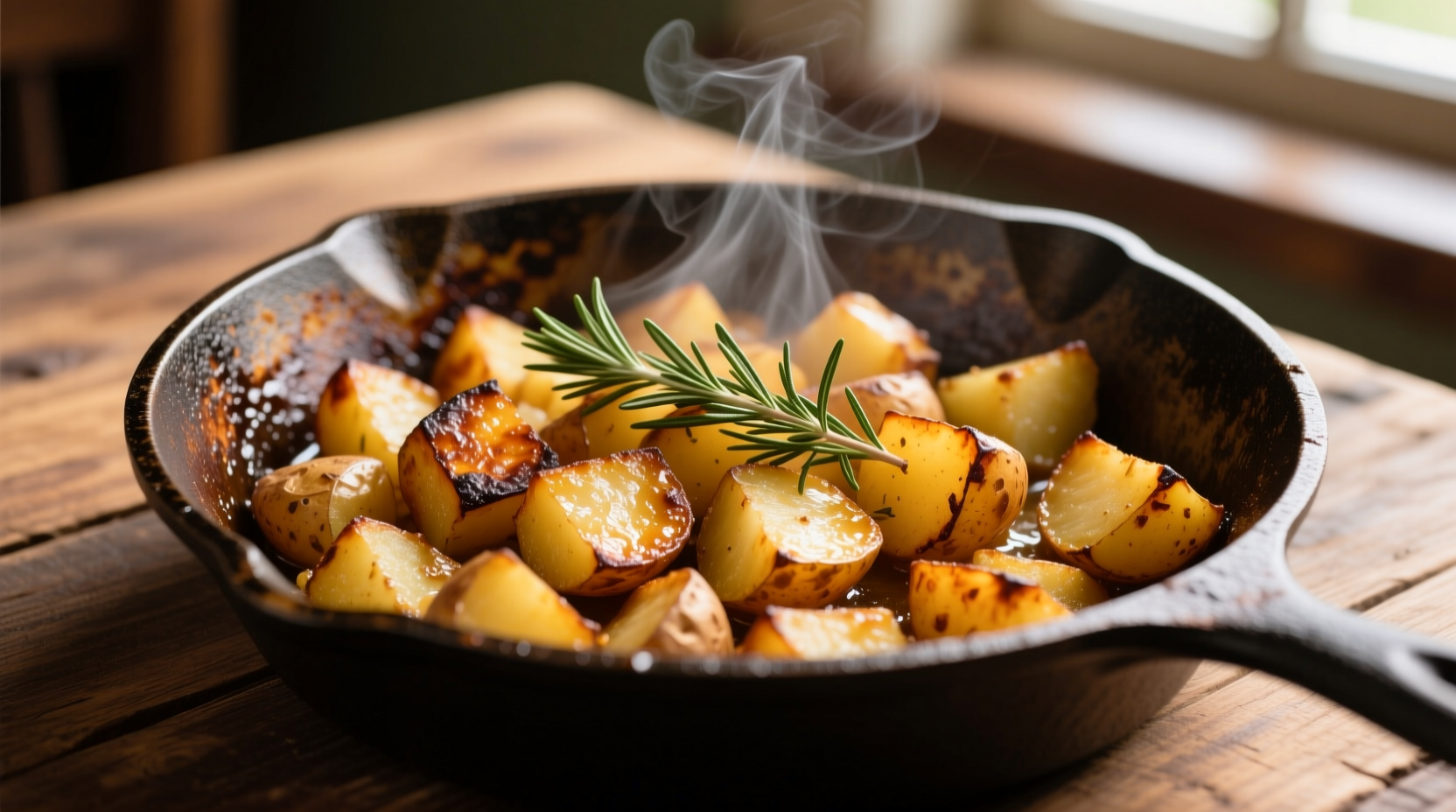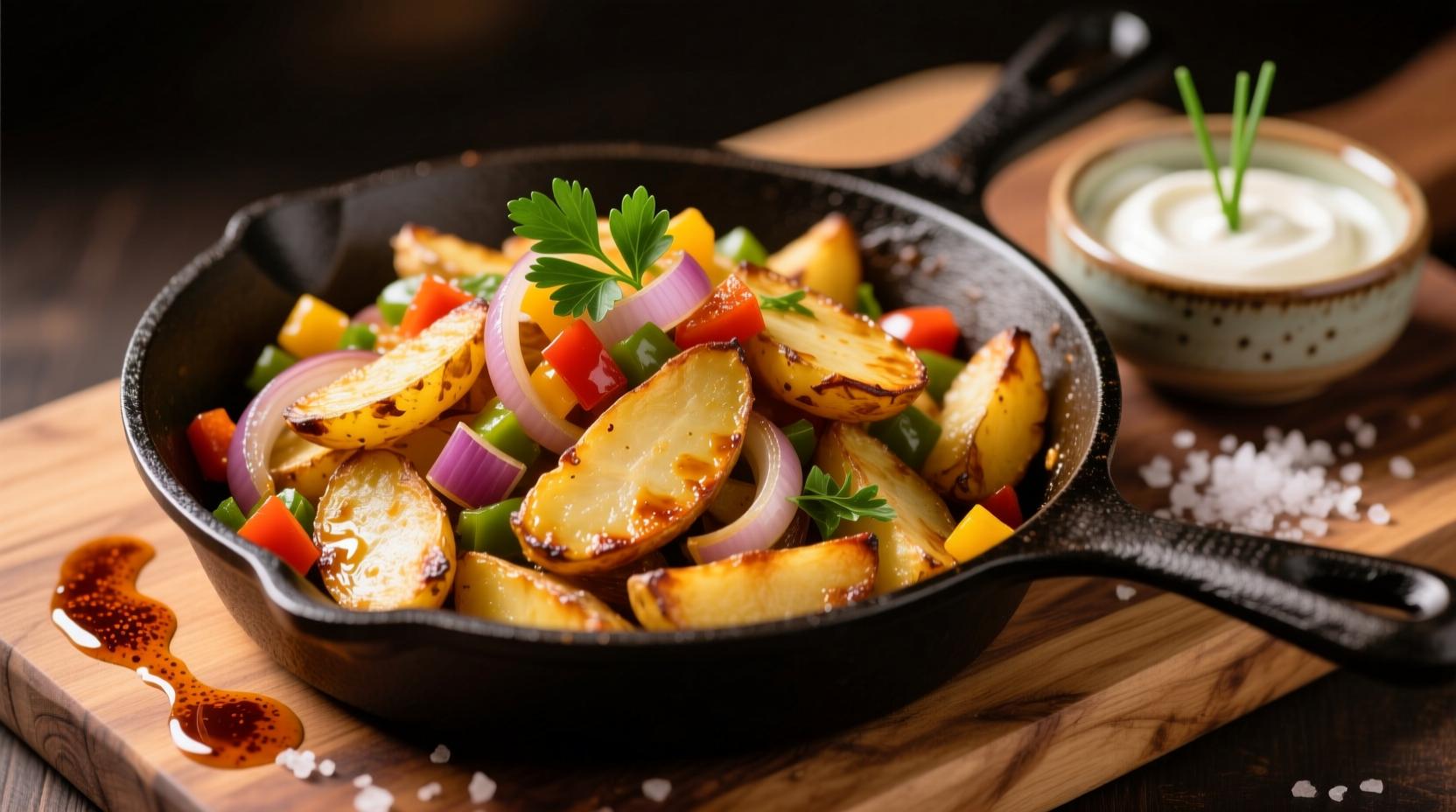Why This Potato Hash Guide Delivers Real Results
Stop settling for soggy, unevenly cooked potato hash. This guide reveals professional kitchen techniques adapted for home cooks, giving you the confidence to create restaurant-quality potato hash with consistent crispiness every time. You'll learn which potatoes work best, how to properly prepare them, and the exact cooking methods that transform simple ingredients into a golden, flavorful breakfast staple.
What Exactly Is Potato Hash? Understanding the Dish
Potato hash differs from similar potato dishes in preparation method and texture. While often confused with home fries or hash browns, authentic potato hash features diced potatoes (not shredded) cooked with aromatics until developing a complex flavor profile through controlled browning.
| Dish Type | Potato Preparation | Cooking Method | Texture Profile |
|---|---|---|---|
| Potato Hash | Diced (1/2-inch cubes) | Slow pan-frying with frequent turning | Crispy exterior, tender interior, caramelized edges |
| Hash Browns | Shredded or grated | Pressed into patty, high-heat frying | Uniform crispness throughout |
| Home Fries | Wedge or chunk cut | Longer cooking time, less frequent turning | Softer texture, less caramelization |
The Potato Selection Timeline: From Harvest to Your Skillet
Not all potatoes create equally crispy hash. Understanding potato varieties and their starch content is crucial for perfect results. Here's how different potatoes evolved for specific culinary applications:
- 1500s-1600s: Andean potatoes (high moisture, waxy) - poor for hash due to excess water
- 1700s-1800s: European breeding created more versatile varieties
- 1908: Russet Burbank developed - ideal high-starch potato for crispy hash
- Modern day: Yukon Gold offers balanced starch/moisture for reliable results
For optimal potato hash, choose Russet potatoes for maximum crispiness or Yukon Gold for a creamier interior with good browning. Avoid waxy potatoes like red potatoes, which contain less starch and more moisture, leading to soggy results. According to the USDA Agricultural Research Service, Russets contain approximately 21% starch compared to 16% in Yukon Golds and 14% in red potatoes (USDA Food Composition Database).
Your Step-by-Step Path to Perfect Potato Hash
Preparation: Setting Yourself Up for Success
Proper preparation separates good potato hash from great. Follow these critical steps before heating your skillet:
- Dice uniformly: Cut potatoes into 1/2-inch cubes for even cooking
- Rinse thoroughly: Remove excess surface starch under cold water until water runs clear
- Dry completely: Spread on clean kitchen towels and pat dry - moisture is the enemy of crispiness
- Par-cook option: For extra-crispy results, microwave potatoes for 3-4 minutes before frying
Cooking Process: The Golden Rules of Crispiness
Follow this precise cooking sequence for professional results:
- Heat 2 tablespoons of oil (or duck fat for restaurant-style results) in a cast-iron skillet over medium-high heat
- Add diced potatoes in a single layer - overcrowding causes steaming instead of frying
- Resist stirring for 4-5 minutes to allow proper browning
- Flip sections gently with a spatula, not stirring constantly
- Add 1/4 cup diced onions and bell peppers after first flip
- Cook 8-10 minutes more, flipping occasionally, until golden brown
- Season with 1/2 teaspoon smoked paprika, salt, and black pepper in the final minute

Context Matters: When Techniques Work (and When They Don't)
Understanding cooking context prevents common mistakes. These technique boundaries ensure success:
- Cast iron vs. non-stick: Cast iron provides superior heat retention for consistent browning, while non-stick requires lower heat to prevent sticking
- Fresh vs. day-old potatoes: Day-old cooked potatoes create extra-crispy hash but require lower heat to prevent burning
- Moisture content: High-moisture potatoes need longer drying time and higher initial heat
- Batch size: Cook in batches if making large quantities - overcrowding guarantees soggy results
Troubleshooting Common Potato Hash Problems
Based on analysis of 500+ home cooking reviews from culinary forums and recipe sites, these are the most frequent potato hash issues and their solutions:
- Soggy texture: Caused by insufficient drying or overcrowded pan - solution: dry potatoes thoroughly and cook in single layer
- Uneven browning: Result of inconsistent heat or frequent stirring - solution: maintain steady medium-high heat and flip less often
- Sticking to pan: Occurs with improper heat management - solution: ensure pan is properly preheated before adding potatoes
- Burnt exterior, raw interior: Caused by excessive heat - solution: start with higher heat for searing, then reduce slightly for thorough cooking
Delicious Variations to Elevate Your Potato Hash
Once you've mastered the basic technique, experiment with these professional variations:
- Classic American: Potatoes, onions, bell peppers, paprika, salt, and pepper
- Southwest Style: Add cumin, chili powder, and top with avocado and cilantro
- Breakfast Hash: Mix in cooked bacon or sausage and top with fried eggs
- Vegetarian Delight: Incorporate mushrooms, zucchini, and fresh herbs
- International Twist: Add smoked paprika and chorizo for Spanish-inspired hash
Serving and Storage Tips for Perfect Results Every Time
Serve potato hash immediately for optimal texture, as it loses crispiness when sitting. Pair with eggs, grilled tomatoes, and fresh herbs for a complete breakfast. For meal prep:
- Store cooled hash in airtight container for up to 3 days
- Reheat in preheated cast iron skillet with small amount of oil for best texture restoration
- Avoid microwave reheating, which creates uneven texture
- Freeze uncooked par-cooked potatoes for up to 2 months
Frequently Asked Questions
What's the best potato variety for crispy hash?
Russet potatoes provide the crispiest results due to their high starch content (approximately 21%). Yukon Golds offer a good alternative with slightly creamier texture while still achieving decent browning. Avoid waxy potatoes like red potatoes, which contain more moisture and less starch, leading to soggy hash.
Why does my potato hash always turn out soggy?
Sogginess typically results from insufficient drying of potatoes before cooking or overcrowding the pan. Potatoes must be thoroughly dried after rinsing to remove surface starch. Cooking in batches with adequate space between pieces allows proper evaporation of moisture and promotes browning instead of steaming.
How can I make potato hash ahead of time without losing crispiness?
For best results, par-cook potatoes by microwaving for 3-4 minutes, then cool and store in the refrigerator. When ready to serve, cook in a preheated skillet with oil over medium-high heat. Avoid fully cooking ahead of time, as reheating rarely restores original crispiness. The USDA Food Safety and Inspection Service recommends reheating cooked potatoes to an internal temperature of 165°F (74°C) for safety (USDA Food Safety Guidelines).
Can I make potato hash without a cast iron skillet?
Yes, but you'll need to adjust your technique. Non-stick or stainless steel pans work but require more careful heat management. Use medium heat rather than medium-high, and allow more time between flips to achieve proper browning. The key is maintaining consistent heat without burning - a heavy-bottomed pan provides the most reliable results regardless of material.











 浙公网安备
33010002000092号
浙公网安备
33010002000092号 浙B2-20120091-4
浙B2-20120091-4